The post Top 10 Poetry-Inspired YA Books appeared first on Teaching With Poetry.
]]>Poetry books for teens have been around as long as young adult literature has, but in the wake of renewed interest in the format, it’s worth checking out some of the wide range of books out there. This is a list of the top 10 poetry-inspired YA books written in verse; it also includes books not published specifically for teen readers in the YA category, but with tremendous appeal to teen readers. Enjoy!
1. House on Mango Street by Sandra Cisneros, published 2009 by Vintage {first published 1984}
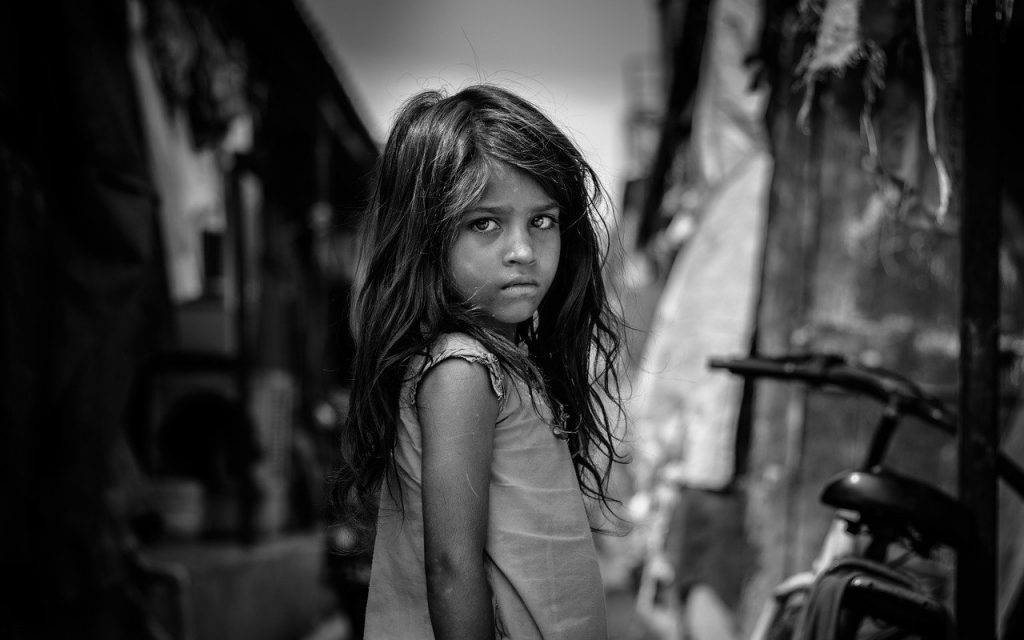
Acclaimed by critics, beloved by readers of all ages, taught everywhere from inner-city grade schools to universities across the country, and translated all over the world, The House on Mango Street is the remarkable story of Esperanza Cordero.
Told in a series of vignettes– sometimes heartbreaking, sometimes deeply joyous– it is the story of a young Latina girl growing up in Chicago, inventing for herself who and what she will become.
2. The Poet X by Elizabeth Acevedo, published 2018 by Harper Teen
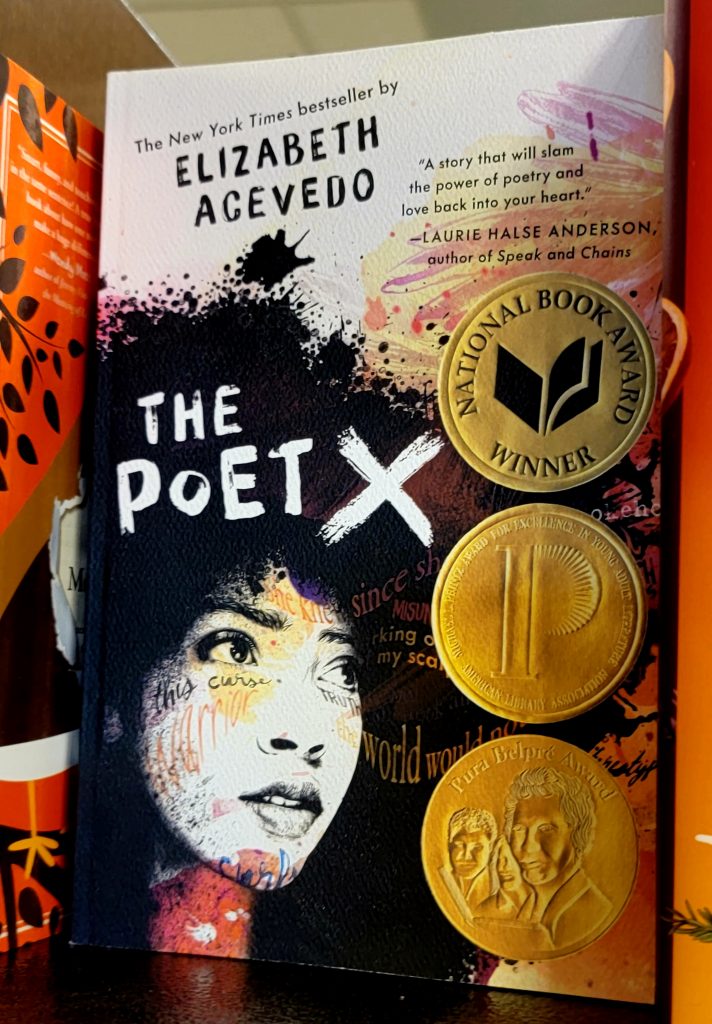
Debut novel of renowned slam poet Elizabeth Acevedo. A young girl in Harlem discovers slam poetry to understand her mother’s religion and her own relationship to the world. Xiomara Batista feels unheard and unable to hide in her Harlem neighborhood. Ever since her body grew into curves, she has learned to let her fists and her fierceness do the talking.
But Xiomara has plenty she wants to say, and she pours all her frustration and passion onto the pages of a leather notebook, reciting the words to herself like prayers— especially after she catches feelings for a boy in her bio class named Aman, who her family can never know about. With Mami’s determination to force her daughter to obey the laws of the church, Xiomara understands that her thoughts are best kept to herself.
So, when she is invited to join her school’s slam poetry club, she doesn’t know how she could ever attend without her Mami finding out, much less speak her words out loud. But still, she can’t stop thinking about performing her poems. Because in the face of a world that may not want to hear her, Xiomara refuses to be silent.
3. The Last True Poets of The Sea by Julia Drake, published 2019 by Disney-Hyperion
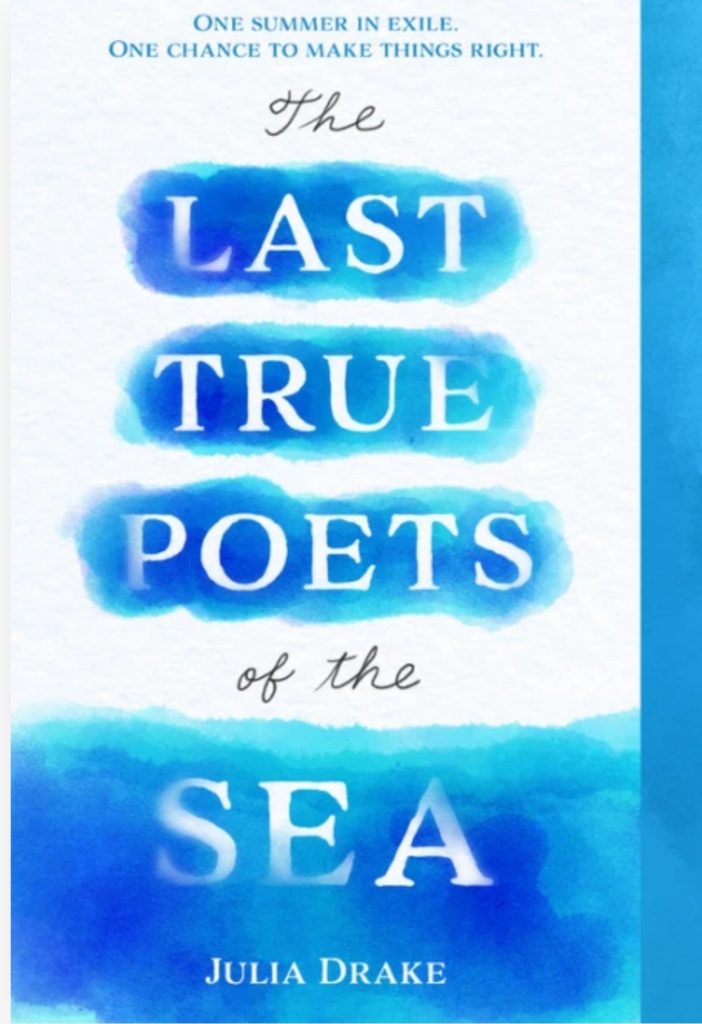
The Larkin family isn’t just lucky— they persevere. At least that’s what Violet and her younger brother, Sam, were always told. When the Lyric sank off the coast of Maine, their great-great-great-grandmother didn’t drown like the rest of the passengers. No, Fidelia swam to shore, fell in love, and founded Lyric, Maine, the town Violet and Sam returned to every summer.
But wrecks seem to run in the family. Tall, funny, musical Violet can’t stop partying with the wrong people. And, one beautiful summer day, brilliant, sensitive Sam attempts to take his own life.
Shipped back to Lyric while Sam is in treatment, Violet is haunted by her family’s missing piece- the lost shipwreck she and Sam dreamed of discovering when they were children. Desperate to make amends, Violet embarks on a wildly ambitious mission: locate the Lyric, lain hidden in a watery grave for over a century.
She finds a fellow wreck hunter in Liv Stone, an amateur local historian whose sparkling intelligence and guarded gray eyes make Violet ache in an exhilarating new way. Whether or not they find the Lyric, the journey Violet takes-and the bridges she builds along the way-may be the start of something like survival.
4. Between the Lines by Jodi Picoult, published 2012 by Simon Pulse Simon Schuster
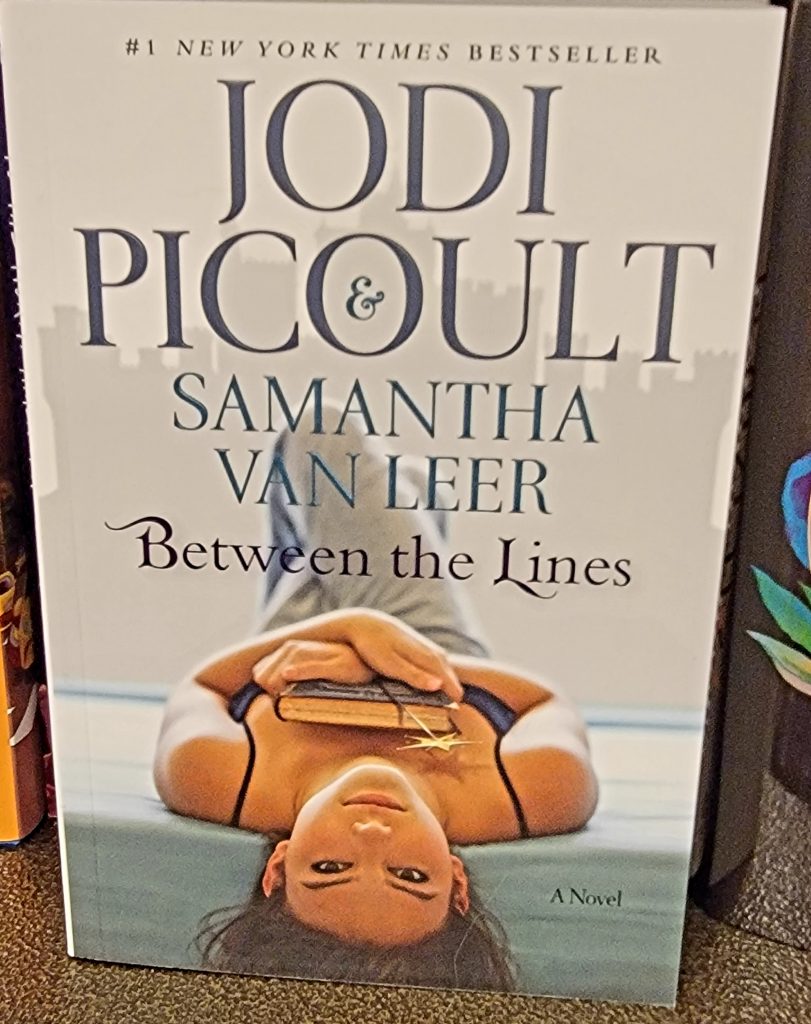
Delilah is a bit of a loner who prefers spending her time in the school library with her head in a book— one book in particular. Between the Lines may be a fairy tale, but it feels real. Prince Oliver is brave, adventurous, and loving. He really speaks to Delilah.
And then one day Oliver actually speaks to her. Turns out, Oliver is more than a one-dimensional storybook prince. He’s a restless teen who feels trapped by his literary existence and hates that his entire life is predetermined. He’s sure there’s more for him out there in the real world, and Delilah might just be his key to freedom.
A romantic and charming story, this companion novel to Off the Page will make every reader believe in the fantastical power of fairy tales.
5. Serendipity and Me by Judith L. Roth, Viking Books for Young Readers

Sara has always loved cats. She surrounds herself with pictures of cats, stuffed cats, even cat-headed slippers. But she’s never been allowed to have a real cat of her own. Her father has always told her no, for reasons he won’t explain.
So when a fluffy snowball of a kitten darts through their front door and into her life, Sara believes her dream might finally come true. But convincing her father to break his strict “No Cats” policy seems impossible. She has less than a week to persuade him that this kitten is exactly what their lonely, broken family of two needs to heal.
Told in lyrical, spare verse, Serendipity & Me is a sparkling novel that elegantly handles the topic of loss for a middle-grade audience.
6. Coaltown Jesus by Ron Koertge, published 2013 by Candlewick Press

Walker shouldn’t have been so surprised to find Jesus standing in the middle of his bedroom. After all, he’d prayed for whoever was up there to help him, and to help his mom, who hadn’t stopped crying since Noah died two months ago. But since when have prayers actually been answered? And since when has Jesus been so… irreverent?
But as astounding as Jesus’ sudden appearance is, it’s going to take more than divine intervention for Walker to come to terms with his brother’s sudden death. Why would God take seventeen-year-old Noah when half of the residents in his mom’s nursing home were waiting to die? And why would he send Jesus to Coaltown, Illinois, to pick up the pieces?
In a spare and often humorous text, renowned poet Ron Koertge tackles some of life’s biggest questions— and humanizes the divine savior in a way that highlights the divinity in all of us.
7. Clap When You Land by Elizabeth Acevedo, published 2020 by Harper Teen, Goodreads Choice Winner 2020

In a novel-in-verse, that brims with grief and love, National Book Award-winning and New York Times bestselling author Elizabeth Acevedo writes about the devastation of loss, the difficulty of forgiveness, and the bittersweet bonds that shape our lives.
Camino Rios lives for the summers when her father visits her in the Dominican Republic. But this time, on the day when his plane is supposed to land, Camino arrives at the airport to see crowds of crying people…
In New York City, Yahaira Rios is called to the principal’s office, where her mother is waiting to tell her that her father, her hero, has died in a plane crash.
Separated by distance— and Papi’s secrets— the two girls are forced to face a new reality in which their father is dead and their lives are forever altered.
And then, when it seems like they’ve lost everything of their father, they learn of each other.
8. A Time To Dance by Padma Venkatraman, published 2016 by Nancy Paulsen Books

Padma Venkatraman’s A Time to Dance is a book that makes readers want to twirl, spin, and shimmy across the dance floor. A Time to Dance is a mesmerizing lyrical tale of rebirth, love, and hope in the life of Veda, a classically-trained Bharatanatyam dancer struggling to rebound following a tragic accident.
Set in India, Venkatraman’s verse beautifully weaves themes of spirituality, friendship, and perseverance to gift us some hope in a year with much too little of it. Padma Venkatraman’s inspiring story of a young girl’s struggle to regain her passion and find a new peace is told lyrically through verse that captures the beauty and mystery of India and the ancient Bharatanatyam dance form. This is a stunning novel about spiritual awakening, the power of art, and above all, the courage and resilience of the human spirit.
9. The Black Flamingo by Dean Atta, published 2019 by Hodder Children’s Books, Stonewall Book Award (2020), Waterstones Children’s Book Prize Nominee for Older Readers (2021), Carnegie Medal Nominee (2020)

Graceful and unapologetically queer The Black Flamingo is a bold novel about the power of embracing your uniqueness. Sometimes, we need to take charge, to stand up wearing pink feathers— to show ourselves to the world in bold color.
Atta a widely celebrated British poet offers a “queer and here” portrait of Michael, a young Jamaican-Greek Cypriot gay protagonist living in Britain. A boy comes to terms with his identity as a mixed-race gay teen— then at university he finds his wings as a drag artist.
10. Every Body Looking by Candice Iloh, published 2020 by Penguin Random House, Michael L. Printz Award Nominee (2021), National Book Award Finalist for Young People’s Literature (2020)

Every Body Looking is a debut novel that tells the story of Ada— daughter of an immigrant father and an African American mother— and her struggle to find a place for herself in America and in her own family.
Every Body Looking is a heavily autobiographical novel of a young woman’s struggle to carve a place for herself— for her black female body— in a world of deeply conflicting messages.
Told entirely in verse, Ada’s story encompasses her earliest memories as a child, including her abuse at the hands of a young cousin, her mother’s rejection and descent into addiction, and her father’s attempts to create a home for his American daughter more like the one he knew in Nigeria.

Written in verse, these top 10 YA novels— full of dreams, young love, heartbreak, and growth—reminded us all of what has been and what can be. So, whether you’re shopping for a young person or just looking to soothe your own soul, these poetic-inspired works are sure to do the job. If you’re looking for more poetry-writing inspiration, check out our 40 Poetry Prompts.
The post Top 10 Poetry-Inspired YA Books appeared first on Teaching With Poetry.
]]>The post Make Poetry Discussions a Success appeared first on Teaching With Poetry.
]]>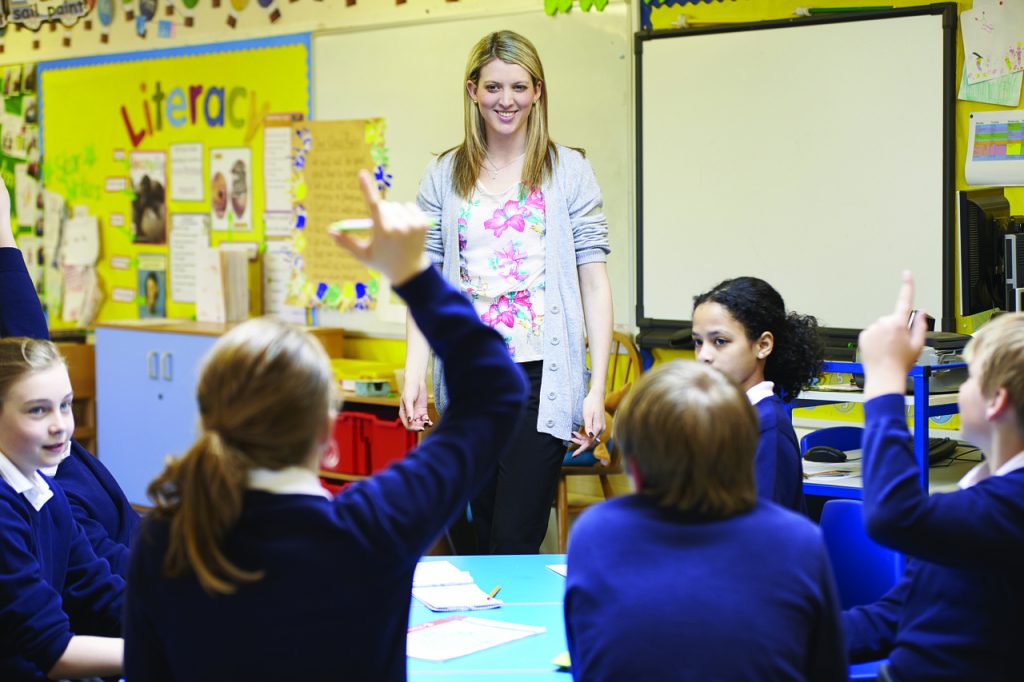
Effective discussions increase students’ understanding of what they read, as well as the reading experience more enjoyable. Learn how you can make poetry discussions a success. You can help students develop effective discussion skills by providing some tools and teaching discussion strategies.
4 Strategies for Effective Poetry Discussions:
- Set clear expectations for students participating in class-wide discussion sessions, small groups, or in pair-n-shares. Model and explain expectations for respectful listening, differences between taking turns and discussion, what active listening means, and how to show respectful disagreement.
- “I Don’t Know” is not an option in your class. Explain to students that they are not required to “know” but they are required to “think.” Encourage students to ponder out loud, to guess, or to speculate.
- Use classroom space strategically. Educator Karl Krahnke notes that situating students in a circle or a horseshoe shape improves communication and class participation by simply allowing students to see and listen to each other’s responses. The circle is a physical signal that students are part of the community rather than apart from it.
- Ask good questions and call on individual students. Good questions are relevant, clear, and generally open-ended. It is a good idea to write down a list of questions that you want to ask during a class discussion. These questions can be used to get the class back on track if the discussion goes awry. Also, to increase the level of attentiveness, use direct questions to specific students.

Rewrite information retrieval style questions— those in which students are asked to simply look in the poem, find specific concrete information, and bring it back to the teacher. This type of page-turning, busy work should be avoided when trying to prompt student discussion.
Take for example the following question: “What metaphor does Milton use to describe Satan in lines 671-634?” Could be transformed into: “How does Milton’s description of Satan in lines 617-634 compare with depictions of the Devil you know from movies or TV?” By improving weak questions, the teacher can improve student engagement in class discussions.

Tools for Dynamic Poetry Discussions:
- Brainstorming Ideas— with your students, brainstorm some ideas about what they can discuss with each other or as a class. You can help get them started by writing the title of the poem on the board and asking them to brainstorm the poem’s structure or what the poem might be about.
- Venn Diagram— A Venn diagram is an illustration that uses circles to show the relationships among things. Circles that overlap have a commonality while circles that do not overlap do not share those traits. Venn diagrams help to visually represent the similarities and differences between two concepts and can be a valuable tool to help students connect ideas. Here are a few free Venn Diagram templates.
- Quote & Question— as students read, ask them to find one line, one quotation that stood out to them, and to write one question that puzzled them.
- Starter Stems— use open-ended discussion starters such as “I wonder…” “I feel…” “Because of…” “How does…” “What evidence…”
- Debatable Lines— have students select the one best line of the poem and then have them discuss or debate why their line is better than the others.
- Guided Topics— suggest a related topic, theme, or genre for discussion that will help you focus on the poetry lesson.
- Student-Generated Questions— generate a list of open-ended questions with your students. More advanced students can generate higher-level questions
- Mini-Post-It Notes— these tiny “flags” work well to identify keywords, stanzas, or lines that students want to share in a discussion. As they read, students make short notes, write questions on the “Post-It” notes to remind them of what they want to ask or discuss.
- Discussion Logs— are a more structured way to facilitate student discussion. These produce enough space to allow students to collect quotations, questions, and interesting words. They are different from a journal entry, whose purpose is extended and reflective. Here are some free templates for different styles of discussion logs.
- Fishbowl— is an excellent strategy for teaching tolerance. You will need to organize the class into medium-to large-group discussions. Students are then separated into an inner and an outer circle. In the inner circle, or fishbowl, students have a discussion; students in the outer circle listen to the discussion and take notes.

To make poetry discussions a success, students need to understand the value of actively listening to their peers, tolerating opposing viewpoints, and being open-minded. They also need to recognize the importance of staying focused and expressing themselves clearly.
Effective communication ensures that students convey his or her message to someone else. Whether it is amongst family members, teachers, or peers, effective communication helps students get through the tasks of life with ease. After all, effective communication is an important life skill for everyone.

If you are looking for more engaging materials for teaching poetry, check out 8 Tips for Teaching Poetry Effectively.
The post Make Poetry Discussions a Success appeared first on Teaching With Poetry.
]]>The post 8 Tips for Teaching Poetry Effectively appeared first on Teaching With Poetry.
]]>Many books have been written on how to understand and interpret poetry, a fact that can be overwhelming for those who believe that poetry is too difficult for them. But for someone like me who loves the challenge of digging into all that a poem has to offer, my goal has always been to make poetry, even difficult poetry, accessible to all students.
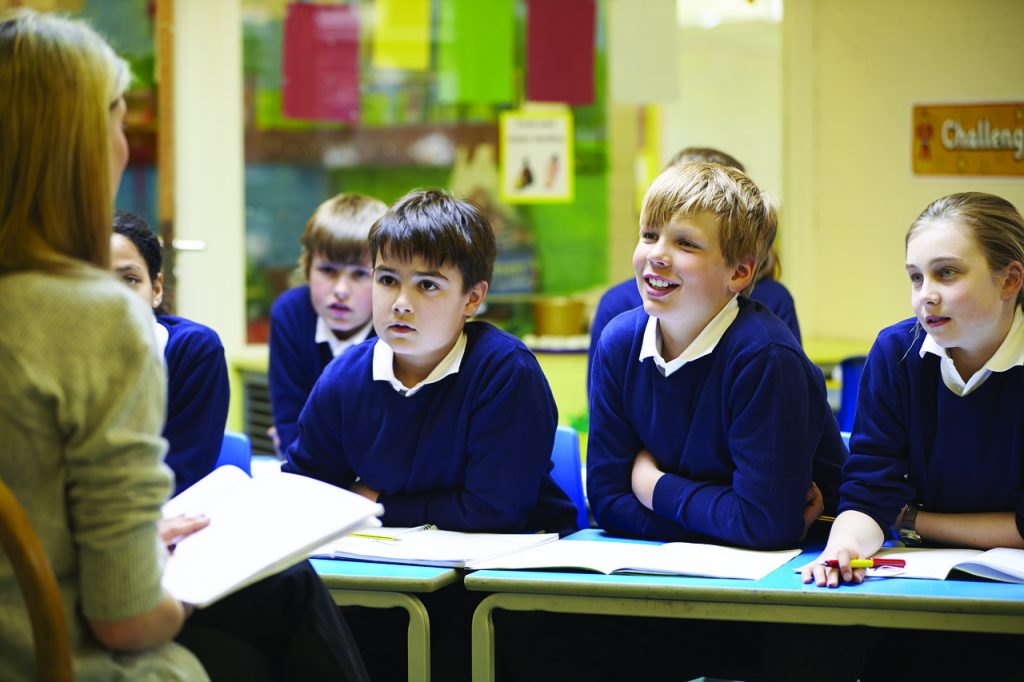
It is important to get a feeling about the poem before you start stripping it down to form and function. It has been said that a poem has many levels of meaning. And often this cannot be ascertained on an initial read.
First, I always recommend that a poem be read aloud. And several times. At least three times before annotating text. Ask yourself, does the sound of the language add anything of importance to the poem’s message or effect?
For example, what does the poem seem to convey? How does it make you feel?
After you have read the poem several times, it is time to interpret. At this point, some might want to paraphrase the poem. However, I often find paraphrasing tedious and unnecessary, especially for high school students, but for elementary or middle school students, this may be very beneficial.
State the basic idea of the poem. The title will usually give you a good clue about the meaning of a poem. Often, the poetic purpose is reiterated in the first and last stanzas. So, reread these stanzas and look for context clues.
How successfully is the poem’s meaning communicated? It is important to have students ask questions about the poem: what, where, how, why?

Explain as fully as you can the poet’s point of view and how ideas are linked and developed within the poem? Try to characterize the speaker as fully as you can.
What elements of figurative language (i.e. metaphors, similes, personification, etc.) are being used, and for what purpose?
Are there comparisons and contrasts within the poem? Consider imagery and possible symbols. Are there any words that you do not know? Does defining these words add to the poem’s meaning?
What effect is the poet striving for? Is the tone and mood of the poem clear? Are there any references or allusions? Pick out words and phrases the poetuses to characterize elements within the poem. Does this poem remind you of any other poem?
Now, let’s look at the form. Are there stanzas? How many lines per stanza? Is there a set meter and rhythm? How does punctuation affect the poem? Is there a rhyme scheme? Is it a narrative poem? Is it a traditional form?
Poetry means far more than it says. And that creates a problem for our students who learn to dislike poetry because it is often presented as an analytical problem and they are given an ever-changing, ambiguous formula to work with.
Analysis of a poem’s mechanics is significant only as a means of gaining full value and pleasure from the poem. Exploring the craft of writing and the poetic process can be fun and rewarding for our students.
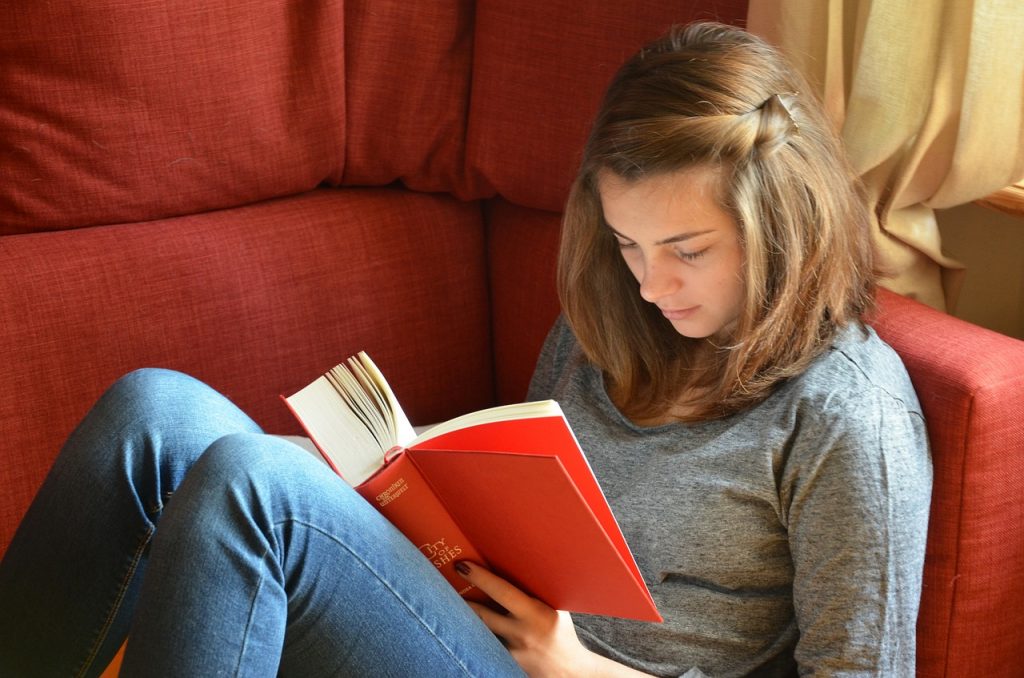
8 Tips for Teaching Poems Effectively:
1 Select poetry with poems that students can relate to; those with real-world applications.
2 Usually, the teacher is the best reader in the room. Read a poem aloud to help students get an overall feeling for the language, rhythm, meter, and message of the poem.
3 Select several poems that connect to a common theme or a common piece of literature (like a novel or a play).
4 Have students research poems online and choose poems to analyze. Let students chose poems that speak to them. This can be very powerful.
5 Pair-and-Share, poetry circles, and poetry corners are a great way to use cooperative, differentiated learning.

6 Gallery walk-throughs are a great way to have students present their research on poets or poems, with creative, visual elements like crafted collages or even dioramas.
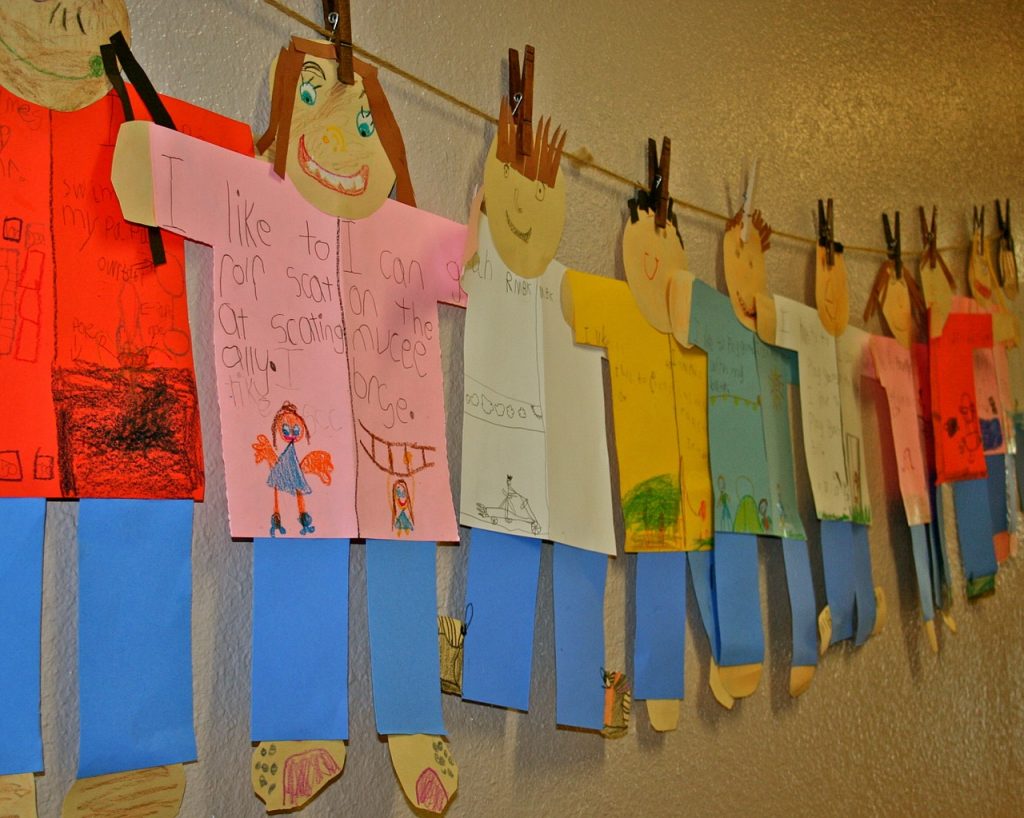
7 Have students write poems. Elementary students can create poems like acrostic poems, haikus, or limericks. Whereas middle and high school students can craft more complex poetic forms like sonnets, villanelles, and free or blank verse poems.
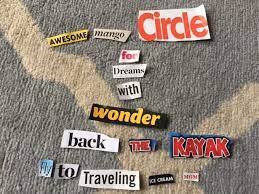
8 When annotating poetry, a teacher must model poetry annotations for students. Even with my AP12 students, I model annotating poetry for several weeks before students begin annotating poems on their own.
Let’s get real. Annotating is a process. And it’s not a fast one. It’s a process that helps students extend their understanding of a text. And that takes time. The value of annotating is to reach a deeper understanding of what has been read. The great thing about poems is that they are short, so they can generally be annotated quickly.
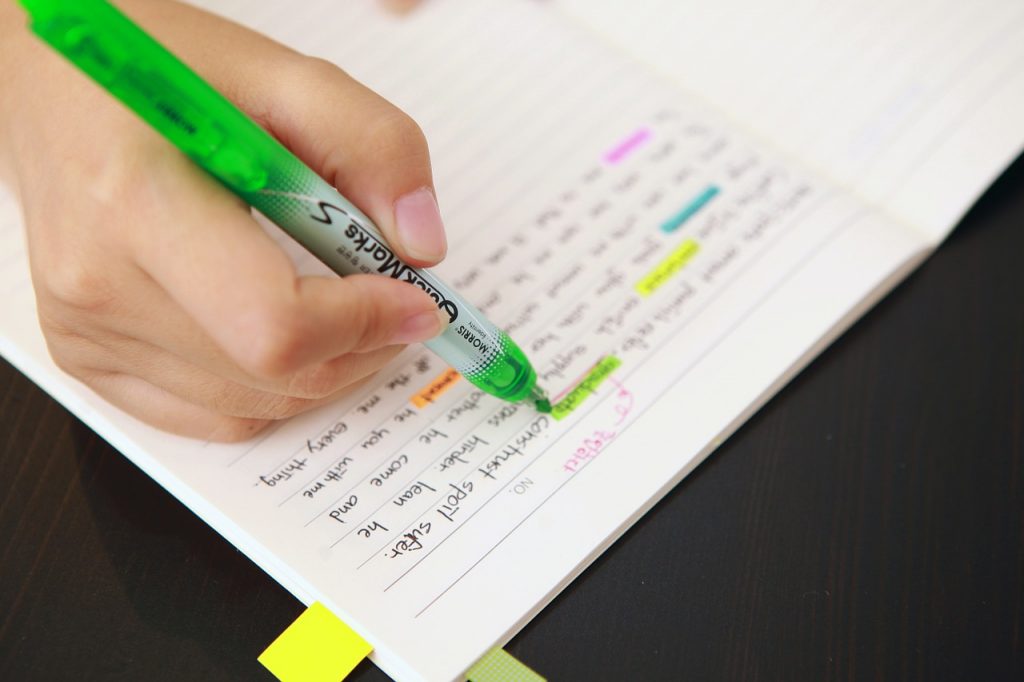
Literary devices are techniques poets use to improve their work.
They can hint at themes, convey the meaning of the poem, or serve a wide variety of other functions. To annotate poems properly, you need to be able to recognize literary devices.
Numerous literary devices may be found in any given poem, such as: allegory, alliteration, allusion, anaphora, apostrophe, assonance, blank verse, cacophony, caesura, consonance, enjambment, hyperbole, juxtaposition, imagery, irony, metaphor, meter, metonym, mood, ode, personification, pun, repetition, rhetorical question, rhyme, rhythm, simile, sonnet, synecdoche, symbolism, tone, and understatement.
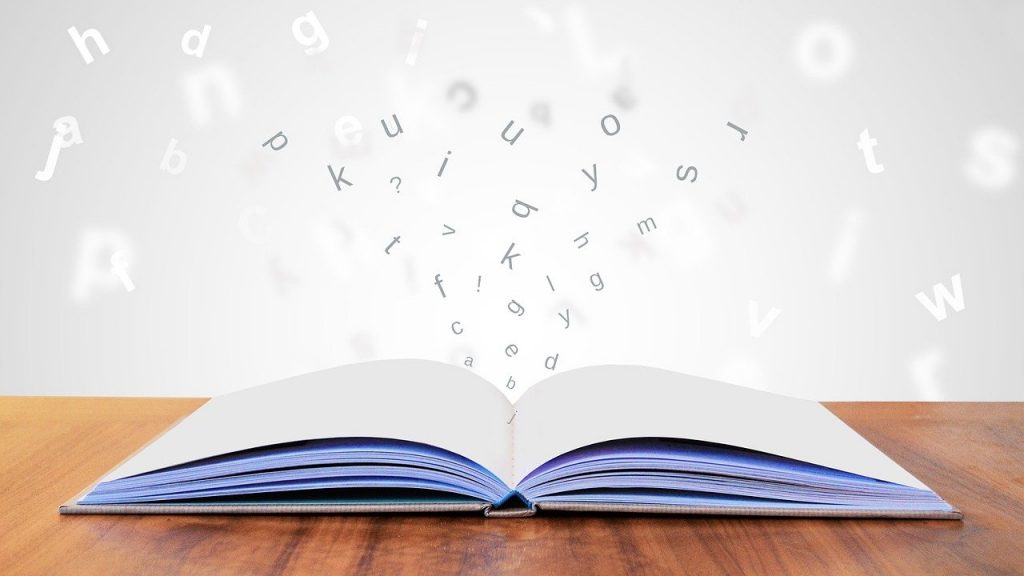
The world of poetry is vast and varied.
Aside from identifying literary devices, students also need to be able to determine the form of the poem. Students will need a quick introduction to some of the most common types of poetic forms. These may include sonnet, haiku, villanelle, acrostic, elegy, epic, descriptive, concrete, or visual, ekphrastic, epigram, limerick, ballad, epitaph, Tanka, cinquain, ode, free verse, blank verse, narrative, and lyric.
Let’s face it. There are many different approaches to examining poetry, and often these approaches do not require an exhaustive analysis of a poem. Annotating poetry is not about finding every single literary device and nuance of the poetic meter; but rather, it is about expanding an initial reading and developing a deeper appreciation for the craft of poetic writing.
If you’re looking for more inspiration for teaching poetry, check out 40 Poetry Writing Prompts. I’d love to see your students’ poems, so have them use #teachingwithpoetry to share their poetry with me @teachingwithpoetry!

The post 8 Tips for Teaching Poetry Effectively appeared first on Teaching With Poetry.
]]>The post 6 Ways to Crush Writer’s Block appeared first on Teaching With Poetry.
]]>
What is Writer’s Block?
Writer’s block is a condition in which a writer with the desire to write finds himself or herself unable to write. The expression “writer’s block” was coined and popularized by American psychoanalyst Edmund Bergler in the 1940s.
Why Do We Get Writer’s Block?
Writers need to believe that what they write matters, even on bad writing days, bad life days, the rejection and criticism that all poets are certain to receive. In the face of these obstacles, how can we encourage our students to just keep writing?
Self-criticism, doubt, and anxiety can contribute to student hesitancy with writing. But remember that intuitive examination is a skill of maturity and often; one that would force students to look at uncomfortable questions about whether what they’re writing is meaningful or even worth turning in.

So, how do we help students combat writer’s block?
6 strategies to help students start and keep writing:
1 Drop everything. Too often students are trying to multitask when working on schoolwork. A good habit to practice is “dropping everything” and rushing directly to writing. Even though they may not be in the mood to write, drop everything, be present, and write.

2 Tell students that they matter. Encouragement goes a long way to improve student productivity. They need to internalize that their writing matters. Their voice matters. Their opinions matter. Provide guidance through the writing process. Reassurance and praise are the cornerstones of student success in any classroom.
3 Students must confront their fear. Writer’s block is often the go-to-excuse for students to not write. Students are much more likely to complain about writing than to figure out why they are not writing. Oftentimes the fear of failure stops students. Encouraging them to stop thinking about the outcome of their writing and rather, focus on the process of writing is beneficial.
I recommend starting with a free writing or quick writes. In truth, you overcome writer’s block by writing. Period. That’s it. That’s the best solution. So, I encourage my students to put their pencils to paper for 3-5 minutes. This technique can help students explore ideas without the distraction of rules and conventions of English grammar.
4 Get inspired. Inspiration can come from anywhere. Students can be inspired by music, artwork, magazines, newspapers, and even by each other.

Here are some ideas that I’ve used to counter students’ writer’s block: color symbolism is a great place to start; paint color cards often have creative names and can be used for inspiration, a words-only-collage of magazine headlines can be used to make a found poem, and of course, creativity doubles when you’re moving versus sitting.
5 Get moving. Movement is crucial. Studies have shown that creativity gets a boost when we move. So, get your students up and moving; take the class for a brief walk around the building (weather permitting) to help get the creativity flowing!
6 Doodle or make a sketch. Some students pre-write by doodling or drawing. This is an especially good tactic in the early elementary grades, but it can be effective in older grades too. I find it helpful to limit the time to sketch to about ten minutes.

Another good idea for those who are hesitant to draw is a Venn diagram. A Venn diagram uses overlapping circles or other shapes to illustrate the logical relationships between two or more sets of items. Often, they serve to graphically organize things, highlighting how the items are similar and different.
If you’re looking for more inspiration for teaching poetry, check out 40 Poetry Writing Prompts. I’d love to see your students’ poems, so have them use #teachingwithpoetry to share their poetry with me @teachingwithpoetry!

The post 6 Ways to Crush Writer’s Block appeared first on Teaching With Poetry.
]]>The post 40 Poetry Prompts for Students appeared first on Teaching With Poetry.
]]>
Write a poem about…
1. One color (to make it harder, try to not use the name of the color in the poem)
2. Being a ghost
3. Getting older
4. Something in your classroom, under your bed, or in your backyard
5. Being under water
6. Waiting in line
7. A nonsense word
8. Things you would never want to do
9. Your five senses
10. Your favorite season
11. What you like (start each line with “I like…”)
12. A favorite smell (i.e. your mom’s perfume, your favorite food, a campfire, etc.)
13. Being an inanimate object that you own (like your soccer ball, something from your room, your backpack, your lunch bag, your cellphone, etc.)
14. Something that others think is ugly, but you do not
15. Someone you love or somone you miss
16. Your favorite memory
17. Your reflection in the mirror
18. How it feels to be invisible or have another superpower
19. Your favorite animal, insect, fish, or even dinosaur
20. Weather (i.e. thunderstorm, snowstorm, tornado, sunny day, etc.)
21. The circus (i.e. performers, animals, audience, etc.)
22. Riding the bus
23. The same letter (select one letter and then begin each line of the poem with that letter; link the lines together to form a poem)
24. What it is like to be an adult
25. Being a car, a motorcycle, a bicycle, or a bus
26. A time when you felt small
27. Being a natural object (i.e. mountain, river, lake, forest, cavern, rainbow, etc.)
28. A place you have always wanted to go, but have never been
29. What love is
30. What you are thankful for
31. How life is like a game
32. Where you would like the wind to take you
33. A word that describes how you feel today
34. Your favorite holiday (to make it harder try to not mention the holiday in the poem)
35. How things have changed last year to this year. How have things changed?
36. Select a piece of art that you like and write a poem about the message of the piece, the feeling evoked by the piece, or about the artist’s inspiration in making this piece
37. A list of words (on one topic-like clothing) and then add adjectives for each of those words
38. School being out
39. Your dreams and goals (Will My Dreams Come True?)
40. Your name (an Acrostic poem works well)

With 40 writing prompts, you should be set for many months to come! If you are looking for more engaging materials for teaching poetry, check out 8 Tips for Teaching Poetry. I’d love to see your students’ poems, so have them use #teachingwithpoetry to share their poems with me @teachingwithpoetry!
The post 40 Poetry Prompts for Students appeared first on Teaching With Poetry.
]]>The post Easy Poetry Forms for Kids (Grades 1-6) appeared first on Teaching With Poetry.
]]>
Acrostic Poem
There are three different kinds of acrostic poems. This is the standard acrostic form; a simple poem is formed when the first letter of each line spells out a word or message. I like the idea of using the names of people, places, and holidays or seasons.
Oh, what wonderful food we eat
Hayrides in the fall and apple cider
Indoors and out there are lots of activities
Of all of the places, I love Cedar Point the best
Lover of all dogs
Enjoys pizza and chips
Artistic at heart
Having fun on my bike
Mesostich
In this type of acrostic, the middles of words or lines form a word or a message. Print your name vertically down the center of your paper in bold letters. Then build each letter into a phrase about the chosen topic.
the bluE planet
one And only
in this univeRse of ours
we call iT
our Home
Telestich
This acrostic uses the last letters of each line to spell a word or a message. *Note: this form may be too difficult for younger children.
My teacher is the greatesT
He is very nice, and he is tall like a treE
His classroom smells like vanillA
He teaches me math and is terrifiC
It is easy for him to reach things high abovE
Mr. Mason makes my yeaR
Haiku
A haiku is an ancient form of Japanese poetry. It is a simple, three-line poem that has a consistent syllable count of 5, 7, 5. I like to have children select one topic and then write three or four haikus about it. Ideas can include places children have been or want to go, poems about stages of life, favorite animals, seasons, or people they love.
Going to Disney
Was my favorite place to be
It was so much fun
Animal Kingdom
Took me to strange animals
I liked the zebras
A trip of my own
After waiting for so long
Finally flying

Skinny-Mini Poem
This is one of my favorite poetry forms for young children. You choose a topic and write; the only rule is that each line must have only two words (including the title). Here are some topics to consider: best vacation, my classroom, the beach, my dog, soccer game, winter fun, my favorite book, my worst day, my hobby, or about me.
Camping Trip
Oh, boy
Family time
Mom’s idea
Hiking forever
Feel hurting
Pine forest
Mountain trail
Rocky ground
Wind blowing
Mosquitos buzzing
Strange noises
Sun setting
Tent up
Owls hooting
Scary stories
Campfire blazing
Burnt marshmallows
Stars shining
Everyone laughing
Great time

A Color Poem
Select a favorite color and then brainstorm a long list of words and phrases associated with it. Write a 5-10-line poem. Be creative! Either print or write the poem using the color and you can even mount it on the same colored construction paper or create a color collage and mount the poem on top of it.
Here are some stems to get children started: …is born, …dies, ….is happy when…., …lives, …knows that, …feels like, …smells like, …tastes like, …is my friend because…
Orange…
…is the color deep inside an angry volcano
…looks like my favorite Tiger’s jersey and the Cheetos in my lunch!
…is as hot as the inside of a lighted Jack-O-Lantern
…feels warm to the touch like a candle’s flame
…tastes like hot tomato soup
…smells like garden mums on my porch
…is happy when the sun rises.

20/20 Poem
This poem is built around a two-word title chosen from a list of 20-adjectives and 20-nouns. In the example below, a randomly chosen word from each list became the title and subject for the poem. There are over 300 different combinations!
*Adjectives: yellow, gigantic, terrible, unbelievable, cheerful, gentle, itchy, angry, endless, hidden, sad, magical, mixed-up, mysterious, silent, tiny, high-flying, fascinating, unforgettable, hidden
*Nouns: blizzard, leprechaun, firefly, underwear, memory, rainbow, spells, thunderstorm, lizard, snowman, book, celebration, sunset, vacation, journey, argument, home, backpack, garden, birthday
An Unforgettable Journey
The leprechaun was tiny and cheerful
The day he left his rainbow behind
And went on an unforgettable journey.
He remembered his book of spells and his backpack.
The journey seemed endless.
After sunset, he ran into a gigantic, angry lizard.
It was fascinating!
But the leprechaun was magical, he took out his book
And said a magical spell.
Poof! The lizard turned into a snowman.
And the leprechaun arrived at his parent’s home
Just in time for his birthday celebration.
A Photo Poem
Select a favorite photograph and then this poem almost writes itself. Use the following questions to help you get started. Who is in the photo? What are they doing? When did it happen? Where did it happen?
Grandpa’s Vegetable Garden
Grandpa working in
His vegetable garden
Wearing his favorite straw hat.
A water fountain surrounds
The colorful vegetables.
He took care of them all summer
He is proud of his work!

Identity Poem
This poem is when the writer writes from the point of view of a person, an animal, or an object. Topic ideas might include a balloon, a sled, a boat, a shoe, a hummingbird, a flower, a shooting star, a rain cloud, a dandelion, or a kite.
Puppy’s First Snow
I crouch in the doorway
Scared to step outside.
The door opens and a snowflake
Dances and lands on my nose.
It tickles.
I step with one paw…
Then another…
Ah, snow!

Cinquain
This is a simple five-line poem. Cinquains are easy and fun to write because they do not require a lot of words. Follow this line pattern: 1-word, 2-words, 3-words, 4-words, and 1-word (a synonym for line 1).
Car
Small, fast
Driving, speeding, passing
Parking in the city
Corvette
Spaniel
Fluffy, small dog
Playing, jumping, running
They are cute and cuddly
Dog
Diamante (Italian for diamond, the poem’s shape)
This is a simple seven-line poem that follows a set pattern and creates the shape of a diamond. They also reinforce some basic grammatical parts of speech. You can write a poem on a single topic, or you can do an opposite diamante wherein you have two contrary topics and use words that highlight each (see example below).
Noun
Adjective, adjective
Verb, verb, verb
Noun, noun, noun, noun
Verb, verb, verb
Adjective, adjective
Noun
Cat
Playful, soft
Playing, leaping, sleeping
Litter, toys, bones, bed
Chewing, running, barking
Friendly, loving
Dog
A Collage Poem
Children draw inspiration from a collage of pictures cut from magazines or newspaper clippings. Choose one topic and write a five-to-ten-line poem. Topic ideas may include babies, clocks/time, candy, trees, dogs/cats, eyes, flowers, or faces. On a piece of construction paper, glue the poem in the center and then use the collage pictures to surround the poem, like a picture frame, or apply the words all over the page. You may want to give children a structured form such as a cinquain or a diamante. Instead of using pictures, another idea for a collage poem is to use only words and phrases.


ABC & 123 Poems
For these simple poems, you make up the pattern for your poem. In an ABC poem, each line begins with a new letter of the alphabet. Children can do one word per line or one phrase per line. A 123 poem is where the first line has 1 word, the second line has 2, and so forth.
Abbey
Baked
Chocolate
Donuts
Every
Friday
The
sunshine
shines on me
in the morning
through my open door
while my cat naps soundly

I hope you have found this post useful. If you want more ways to inspire young writers in your classroom, check out 40 Poetry Prompts For Students. I’d love to hear from you! Fill out the contact form and share any of these ideas that you used in your classroom or tag me on Instagram @teachingwithpoetry and use #teachingwithpoetry.

The post Easy Poetry Forms for Kids (Grades 1-6) appeared first on Teaching With Poetry.
]]>The post 5 Tips for Teaching ESL Poetry Lessons appeared first on Teaching With Poetry.
]]>Those who teach English as a Second Language (ESL) understand firsthand how teaching English to speakers of other languages presents many unique challenges. Some of those difficulties include a limited vocabulary range, anxiety in students who struggle to communicate or explain their confusion and very limited literacy in their second language, time constraints, and obviously, culture shock.
But poetry is hard, right? So, wouldn’t It be easier to skip teaching it in an ESL classroom?
Given that poetry is hard for most students. It is no surprise that our ESL students struggle deeply with the nuances of poetic content, meter, and structure. Let’s face it, a lot of poetry is just plain difficult to understand and a large portion of it is intentionally complicated.
The attitude of many may be to shy away from even teaching poetry in ESL classrooms, but that is doing our students a disservice. Poetry helps us understand different perspectives. Teaching and learning from poetry can help students respect and understand the viewpoints of people across the globe. Given that, I would argue that poetry has a place in all ESL classrooms!

So, how can teachers help ESL students not only understand but appreciate poetry? It might be easier than you think.
5 Tips for Teaching ESL Poetry:
1. Incorporate poetry into the curriculum. Students learning a new language while in school are facing many other challenges. An entire unit focused on poetry could create confusion and dislike for the genre. An easy way to incorporate poetry into a literary unit is to use thematic-based poetry to link seamlessly with a standardized curriculum. This will reduce stress on both the student and the teacher. Try to select poetry that is approachable and relevant. Once students can easily see connections, they can then relate the importance of the poetry to their overall learning objectives.
2. Share the culture. ESL classrooms often have students from a wide variety of cultural backgrounds and traditions. Not only are there language barriers to overcome, but also a wide variety of educational backgrounds and culture-specific learning styles. Gaining knowledge about the different cultures in one’s room increases a teacher’s effectiveness when making lesson plans that incorporate poetry and can foster better interactions with ESL students.

Having students research poets online from their native countries is a good place to start. I like the idea of students picking poems to examine. They can discuss what facts and features their poet chose to use and figure out the poem’s overall message, tone, and mood. When students can break a poem down into certain elements— line length, word choice, use of rhyme, students can discuss with confidence why the poem matters.
3. Read poems aloud. Most ESL students are reluctant to read aloud. But encouraging ESL learners to communicate verbally in class helps them practice the language and detect verbal cues. Reading aloud helps ESL students develop language and cultural awareness. By adding verbal response elements to poetry lessons, teachers can help ESL students become comfortable speaking a new language in front of others, even if it is a short poem.
4. Make it visual. Pictures are great for presenting many poems. Think about visual cues for nouns, adjectives, and even simple line or stanza patterns. Look for pictures that are simple, yet effective. With younger students, solicit words by asking “What do you see?” Be sure to call on many students and meet all their suggestions with positive feedback. With older students, you can have them predict a poem’s topic based upon related pictures or even visualizing the poem’s title. But what if you do not have access to online pictures? Well, when all else fails, or you need a quick solution, use simple drawings, or stick figures. Stick figures take only a second to draw, can be used to teach just about anything, and are guaranteed to get a laugh or two.
5. Pair and share. When analyzing poetry, working in pairs is more effective than in large groups because both students are actively involved. Oftentimes, large groups can be intimidating and tend the silence ESL students who often fall behind those who are more eager and skillful and tend to dominate larger groups.
This student-centered learning reduces the amount of teacher-talking time which is one of the great reasons to use pair and share work in the ESL classroom. It gives students more opportunities to speak and practice what they’ve learned and shared in a safe, non-intimidating way. It teaches students to share ideas and builds oral communication skills. And lastly, it helps focus attention and engage students in comprehending the poetic material.

Teaching poetry to non-English speaking students is challenging, but the effort can be very rewarding. If you want to learn additional teaching strategies that improve your effectiveness as an educator, you should read Eudtopia’s “Do’s and Dont’s for Teaching English-Language Learner” and our 8 Tips for Teaching Poetry Effectively.
The post 5 Tips for Teaching ESL Poetry Lessons appeared first on Teaching With Poetry.
]]>The post The Ultimate Guide of Poetry Terms appeared first on Teaching With Poetry.
]]>This is a list of terms for describing texts, with an emphasis on terms that apply specifically to AP poetry, that appear most frequently in literary criticism.

Poetic devices are a form of literary device used in poetry. A poem is created out of poetic devices composite of structural, grammatical, rhythmic, metrical, verbal, and visual elements. They are essential tools that a poet uses to create rhythm, enhance a poem’s meaning, or intensify a mood or feeling.
The Ultimate Guide of Poetry Terms:
Alliteration—the close repetition of beginning consonant sounds.
Allusion—an indirect reference to a mythological, literary, or historical person, place, or thing.
Anapest—foot consisting of 2 unstressed syllables followed by a stress.
Anaphora—repetition of an opening word or phrase in a series of lines.
Apostrophe—a form of personification in which the absent or dead persons, concepts or ideas, inanimate objects are spoken to directly as if they were present, real persons.
Assonance—the repetition of vowel sounds in a series of words.
Aubade—a poem about dawn
Ballad—a daily short narrative poem written in a songlike stanza form.
Beat—a stressed (or accented) syllable.
Blank verse—unrhymed iambic pentameter.
Cacophony—a harsh, discordant, unpleasant-sounding arrangement of sounds.
Cadence—describes the rhythmic pacing of language to a resolution; used to describe the subtle rise and fall in the natural flow and pause of ordinary speech where the strong and weak beats of speech fall into a natural order restoring the audible quality to poetry.
Caesura—a deliberate rhetorical, grammatical, or rhythmic pause, break, cut, turn, division, or pivot in poetry.
Chapbook—a small book (generally of poetry) of about 24-50 pages.
Consonance—the repetition of a consonant sound with a series of words to produce a harmonious effect.
Couplet—stanza of 2 lines; often, a pair of rhymed lines.
Dactyl—foot consisting of a stress followed by 2 unstressed syllables.
Decasyllable—line consisting of 10 syllables.
Diction—word choice. Formal or informal? Slang or a dialect?
Dimeter—a metrical line consisting of two feet
Double entendre—an ambiguity with one interpretation that is indelicate; a word or remark that has a hidden (or not so hidden) mischievous meaning
Ekphrasis—a literary description of a work of visual art
Elegy—a sad poem, usually written to praise and express sorrow for someone who is dead. Although a speech at a funeral is a eulogy, you might later compose an elegy to someone you have loved and lost to the grave.
Enjambment—the running-on of the sense/meaning of one line of poetry into the next. Continuation of sense and rhythmic movement from one line to the next; also called a “run-on” line.
Envoi—a brief ending (usually to a ballade or sestina) no more than 4 lines long; summary.
Epic—a long narrative poem telling of and celebrating a hero’s deeds
Epigraph—a short verse, note, or quotation that appears at the beginning of a poem or section; usually presents an idea or theme on which the poem elaborates, or contributes background information not reflected in the poem itself.
Epistrophe— repetition of the ends of successive sentences, verses, etc.
Euphony—a smooth, pleasant-sounding choice and arrangement of sounds.
Figurative Language— language employing figures of speech; language that cannot be taken literally
Foot—unit of measure in a metrical line of poetry.
Free verse—non-metrical poetry in which the basic rhythmic unit is the line, and in which pauses, line breaks, and formal patterns develop organically from the requirements of the individual poem.
Hendecasyllable—line consisting of 11 syllables.
Hexameter—line consisting of 6 metrical feet.
Honorarium—a token payment for published work.
Hyperbole—a deliberate, extravagant, and often outrageous exaggeration. It may be used for either serious or comic effect.
Iamb—foot consisting of an unstressed syllable followed by a stress.
Imagery—the visual (or other sensory) pictures used to render a description more vivid and immediate.
Idiom— an expression whose meanings cannot be inferred from the meanings of the words that make it up; a form of expression that is particular to a certain person or group of people.
Imagery– the use of sensory words/descriptions to represent things, actions, or ideas.
Irony— the contrast between the apparent meaning and the suggestion of a different meaning. It occurs in three varieties:
• Verbal irony is the result of a statement saying one thing while meaning the opposite. Its purpose is usually to criticize.
• Situational irony is when a situation turns out differently from what one would normally expect, though often the twist is oddly appropriate.
• Dramatic irony is when a character says or does something that has more or different meanings from what he thinks it means, though the audience and/or other characters do understand the full ramifications of the speech or action.
Juxtaposition—is an act of placing two elements close together or side by side.
Line—basic unit of a poem; measured in feet if metrical.
Litotes— ironic understatement in which an affirmative is expressed by the negative of its contrary (e.g., you won’t be sorry, meaning you’ll be glad).
Metaphor—a comparison between two things without the use of like or as. The poet states that one thing is another. It is usually a comparison between something concrete and something abstract.
Meter—the rhythmic measure of a line.
Metonymy—representing something by the name of another thing closely associated with it.
Mood—a literary element that evokes certain feelings in readers through words and descriptions. Mood is the atmosphere of the narrative.
Octave—stanza of 8 lines.
Octosyllable—line consisting of 8 syllables.
Ode—an ode is a form of lyric poetry—expressing emotion—and it’s usually addressed to someone or something, or it represents the poet’s musings on a certain person or thing.
Onomatopoeia—the use of words in which the sounds seem to resemble the sounds they describe.
Oxymoron—a form of paradox that combines a pair of contrary terms into a single expression. It usually serves the purpose of shocking or surprising the reader into awareness.
Palindrome—a word, phrase, or sequence that reads the same backward as forward, e.g., madam.
Paradox—a situation or action or feeling that appears to be contradictory but on inspection turns out to be true or at least to make sense.
Pastoral—A pastoral poem explores the fantasy of withdrawing from modern life to live in an idyllic rural setting.
Pentameter—line consisting of 5 metrical feet. For instance, iambic pentameter equals 10 syllables (5 unstressed, 5 stressed).
Persona—the “character” the writer assumes for the purpose of the work.
Personification—a kind of metaphor that gives inanimate objects or abstract ideas human characteristics or feelings.
Poetry—literary work in which special intensity is given to the expression of feelings and ideas by the use of distinctive style and rhythm, poems collectively or as a genre of literature.
Pun—a play on words that are identical or similar in sound but have sharply diverse meanings. Puns may be serious as well as humorous.
Quatrain—stanza of 4 lines.
Quintain—stanza of 5 lines.
Refrain—a repeated line within a poem, similar to the chorus of a song.
Rhyme—words that sound alike, especially words that end in the same sound.
Rhythm—the beat and movement of language (rise and fall, repetition and variation, change of pitch, mix of syllables, melody of words).
Sarcasm—a type of irony in which a person appears to be praising something but is actually insulting it. Its purpose is usually to injure, to hurt or, if satirical, to change.
Scansion—the process of measuring metrical verse, marking accented and unaccented syllables; noting variations in pattern
Sibilance—having, containing, or producing the sound of or a sound resembling that of the s or the sh (as in sash).
Simile—a comparison of two different things or ideas through the use of the words like or as.
Septet—stanza of 7 lines.
Sestet—stanza of 6 lines.
Slant rhyme—a type of rhyme formed by words with similar but not identical sounds, where either the vowels or the consonants of stressed syllables are identical.
Sonnet—a fixed form of 14 lines, normally iambic pentameter, with a fixed rhyme scheme conforming to one of two types— the English or the Italian.
• English (or Shakespearean) sonnet: a sonnet with a fixed rhyme scheme ababcdcdefefgg.
• Italian (or Petrarchan) sonnet: a sonnet consisting of an octave rhyming abbaabba and of a sestet using any arrangement of two or three additional rhymes, such as cdcdcd or cdecde.
Spondee—a metrical foot consisting of 2 stressed syllables.
Stanza—group of lines making up a single unit; like a paragraph in prose.
Strophe—often used to mean “stanza”, also a stanza of irregular line lengths.
Symbolism—the use of one object to suggest another hidden object or idea.
Synecdoche—a form of metaphor in which a part of something is used to signify the whole or the whole can represent a part.
Syntax—the ordering of words into a particular pattern. If a poet shifts words from the usual word order you know you are dealing with an older style of poetry or a poet who wants to shift emphasis onto a particular word.
Tercet—stanza or poem of 3 lines.
Terza Rima—an interlocking rhyme scheme with the pattern aba bcb cdc, etc.
Tetrameter—line consisting of 4 metrical feet.
Theme—the central idea of a literary work.
Tone—the attitude of the speaker. Remember that the voice need not be that of the poet.
Trochee—foot consisting of a stress followed by an unstressed syllable.
Trope—a figure of speech, such as a metaphor
Understatement—a figure of speech that is the opposite of hyperbole. It is a kind of irony that deliberately represents something as being much less than it really is.
Valediction—an act or utterance of farewell.
Verse—metrical language; the opposite of prose.
Villanelle—a 19 line fixed form consisting of 5 tercets rhymed aba and a concluding quatrain rhymed abaa, with lines 1 and 3 of the first tercet serving as refrains in an alternating pattern through line 15 and then repeated as lines 18 and 19.
Voice—the “sound” of the author’s or narrative’s voice.
This list offers an emphasis on terms that apply specifically to poetry, that appear most frequently in literary criticism, or for which dictionary definitions tend to be unenlightening. The list is intended as a quick-reference guide and is by no means exhaustive; similarly, the definitions given below aim for practical utility rather than completeness. Check out this AP Poetry Terms list for some more information and examples.
If you are looking for more engaging materials for teaching poetry, check out 7 Steps to Annotating Poetry.

The post The Ultimate Guide of Poetry Terms appeared first on Teaching With Poetry.
]]>The post How to Teach Blackout Poetry appeared first on Teaching With Poetry.
]]>What is Blackout Poetry?
Blackout poetry is a form of “found poetry” where you select words that catch your interest from a newspaper, book, or other printed text– along with a few additional words to make it flow. Then using a marker, you simply blackout the rest of the text. Blackout poetry is fun and just like a treasure hunt… but with words! Blackout poetry can also be a great exercise to help those suffering from writer’s block.

Who Invented Blackout Poetry?
Blackout poetry was invented by Texas-based author, Austin Kleon. In a 2012 TEDx talk, Kleon traces the evolving history of blackout poetry back 250 years, to a man named Caleb Whiteford who published a broadsheet of found poetry and puns he’d collected from some of the first-ever print newspapers.
7 Steps to Teach Blackout Poetry:
1. First, explain what blackout poetry is. Then show students some examples. There are entire websites and Instagram accounts dedicated to this type of poetry.
2. Bring in old newspapers, books, or magazines. Make sure that you don’t mind these items being completely and utterly destroyed.
3. Make sure that each student has a marker, preferably black.
4. Ask students to read the passage and skim for eye-catching words or phrases that might work well in a poem.
5. As students make their final decisions, have them blackout the rest of the text on the page. When only those words are visible, a brand-new poem is created from the existing text. That’s right, a brand-new poem.
6. Have students either cut out the words or phrases chosen or rewrite (or type) their poem. These may be glued on construction paper and/or decorated.
7. Students can share their poems with the class.
Here is a sample blackout page from Poets and Writers Magazine.
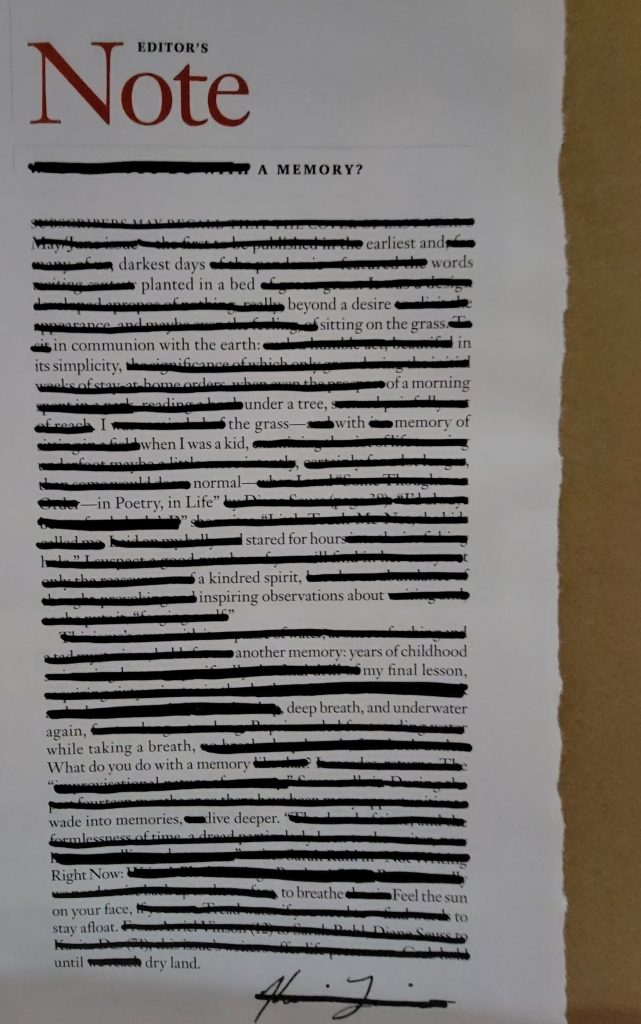
Here’s the poem.
A memory? Earliest and darkest days— words planted in a bed beyond desire sitting on the grass in communion with the earth: it’s simplicity. Of a morning under a tree, the grass— with memory of when I was a kid, normal— in poetry, in life. I stared for hours, a kindred spirit inspiring observations about another memory: years of childnood. My final lesson, a deep breath underwater again. While taking a breath, what do you do with a memory? Wade in it, dive deeper? Right now: breathe. Feel the sun on your face to stay afloat until you’re once again on dry land.
Not too bad, right? Exactly, anyone can create a poem using this form, even from an editor’s letter.

4 Tips for Writing Blackout Poetry:
1 Skim, skim, skim. When making blackout poems, unlike a reading text for school, when picking an article to use, it’s best not to read it too closely. Skimming is the way to go. Tell students to look for words and phrases that jump off the page. That way, students won’t be overly influenced by the original text and they can create something uniquely their own.
2 Have students circle or highlight words and phrases that speak directly to them. Ones that they like the sound of. Have them look for nouns, verbs, and adjectives.
3 To make students’ poems flow, they will inevitably need to add words to link their ideas together. Words like “a,” “the,” “of,” and “so.”
4 Another, less messy, way to utilize blackout poetry is to simply have students cut out words and phrases and arrange them on a desk or table to create the poem. Physically moving the pieces around might just spark a new idea about the poem’s theme or structure.
Are your students ready to start writing blackout poetry of their own? If so, encourage your students to share their blackout poetry with the world by using the hashtags #blackoutpoetry and #teachingwithpoetry to get them started.
If you need more resources to help get your students writing, don’t forget to check out Tips For Crushing Writer’s Block.

The post How to Teach Blackout Poetry appeared first on Teaching With Poetry.
]]>The post Teaching Instapoetry with Instagram appeared first on Teaching With Poetry.
]]>So, why Instagram?
Instagram, the wildly popular photo-sharing app has over one billion users, and that’s not surprising due to its simple, fun way users can capture, edit and share photos, videos and messages. Students love social media, especially Instagram! Not so long ago, poets began using Instagram to share their Instapoetry.
What is Instapoetry?
Poetry is great means of communication and can be a wonderful emotional outlet. Instapoetry is usually short, free verse poems that are often paired with a shared image that represents the poem’s theme. Some poets use their own sketches and artwork (including photography) as background images for their poems. This innovative and creative use of Instagram need not be limited to social media, it can easily be integrated into our classrooms. In this article, I will share ideas that will inspire your students to use IG to share their own poetry!
Have students check out popular Instapoets like @rupikaur_, @birdy_skyes, @nayyirah.waheed, to see firsthand the effect and emotional impact IG poetry can have! Have them take note of how the nuances of instapoetry (i.e. themes, punctuation, and background images) all work together to convey the poet’s message.

I recommend setting up a classroom IG account and having students write, design, and share (using @nameofyouraccount). For elementary school students, you might want to have students create poems in a small group or a pair-and-share.
For middle school and high school students, it may surprise you to know that many students already know about this genre and will be eager to share their work on your classroom hub.
Before students begin writing their own instapoems, you will need to discuss common aspects of writing instapoetry (i.e. how to edit down and abbreviate poetic lines, theme, symbolism, and of course, aspects of figurative language).
Poetry forms that work well for instapoetry include haiku, free verse, limerick, and cinquain. For those students who aren’t sure what to write about or for those who are not as in tune with emotional rhetoric, I prefer using blackout poetry to assist them in crafting instapoetry. Check out my article on How to Teach Blackout Poetry for more information.

Here are some guidelines for students to follow:
• Instapoems must be short, 3-6 lines, and written in free verse (generally punctuation is used only for effect)
• Each poem must have a connecting background image and a readable font that compliments the poem’s message or theme
• Students IG names, poems, and images must be school-appropriate
• Encourage students to write and design at least 3 instapoems and then select the best one to share. Writing several poems will help get students inspired!
• Using IG for instapoetry could be a great end to a literary unit (there are many ideas and options for thematic or character-driven topics
On Edutopia.org, Kyleen Gray suggests in her article, Using Instagram to Teach Poetry that she “had asked students to post their poetry over the span of a week or so, and we started each language arts lesson by taking a look at a few students’ work. I gave students 10 minutes or so each day to read each other’s posts and like or share their favorites. We tracked everyone’s individual favorite (and most shared) poems, and talked about what made certain poems both visually and intellectually engaging.”
Furthermore, Gray states, “These were great conversations focused on the craft of poetry and on media techniques. We made it a bit of a contest; the three students with the most shared and liked poems got recognition and a treat from my classroom prize box.”
Another wonderful and free resource is at The Secondary English Coffee Shop offers a FREE WORKSHEET for students to find examples of IG poetry and then answer questions for a more thorough analysis.
Using instapoetry throughout the school year, will not only add to your IG hub for years to come but, more importantly, it will reinforce the fundamental literacy skills and appreciation of poetry that we are all trying to instill in our students.
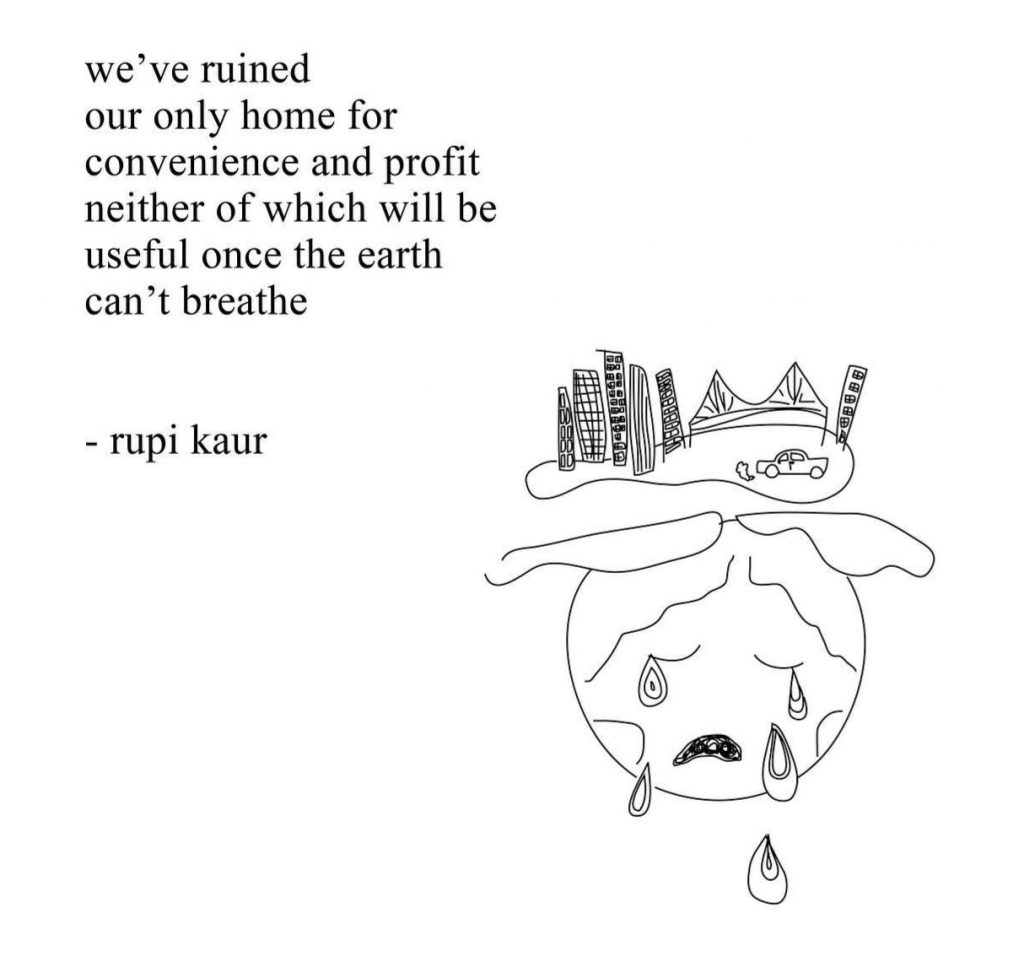
If you are looking for more engaging materials for teaching poetry, check out 40 Poetry Writing Prompts for Kids. I’d love to see your students’ instapoems, so have them use #teachingwithpoetry to share their instapoems with me @teachingwithpoetry!
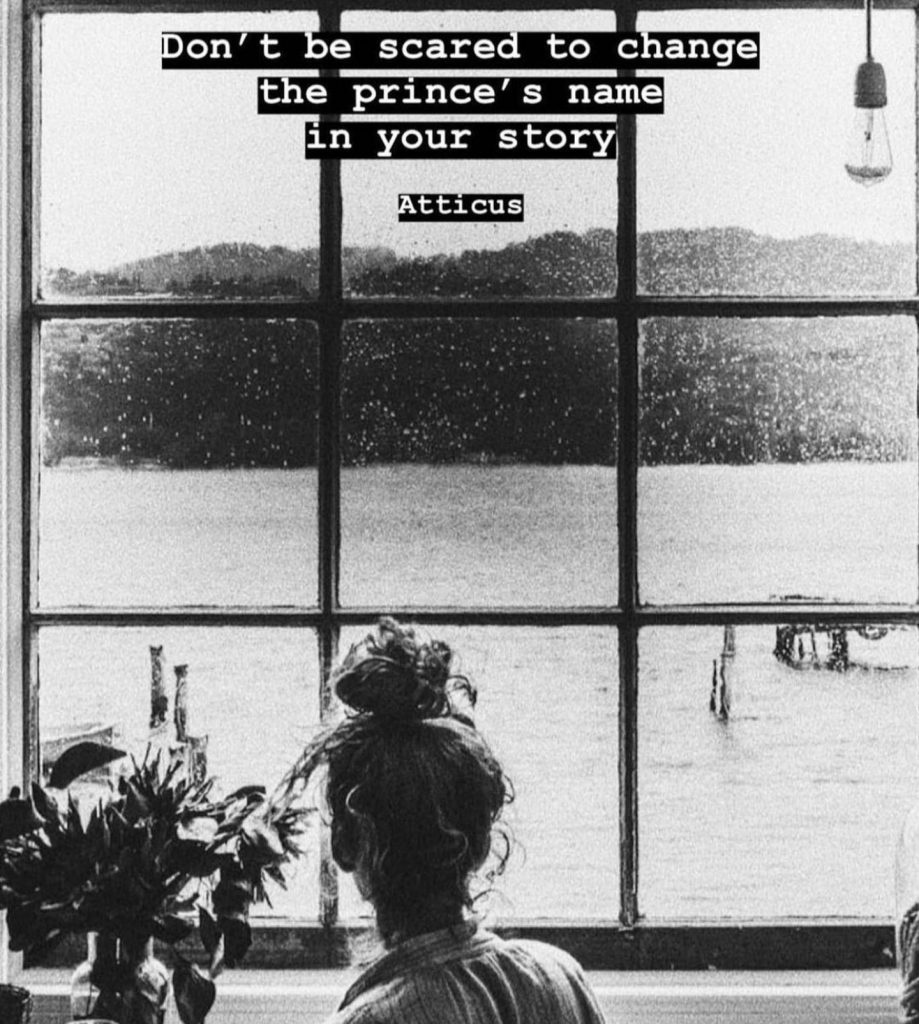
The post Teaching Instapoetry with Instagram appeared first on Teaching With Poetry.
]]>